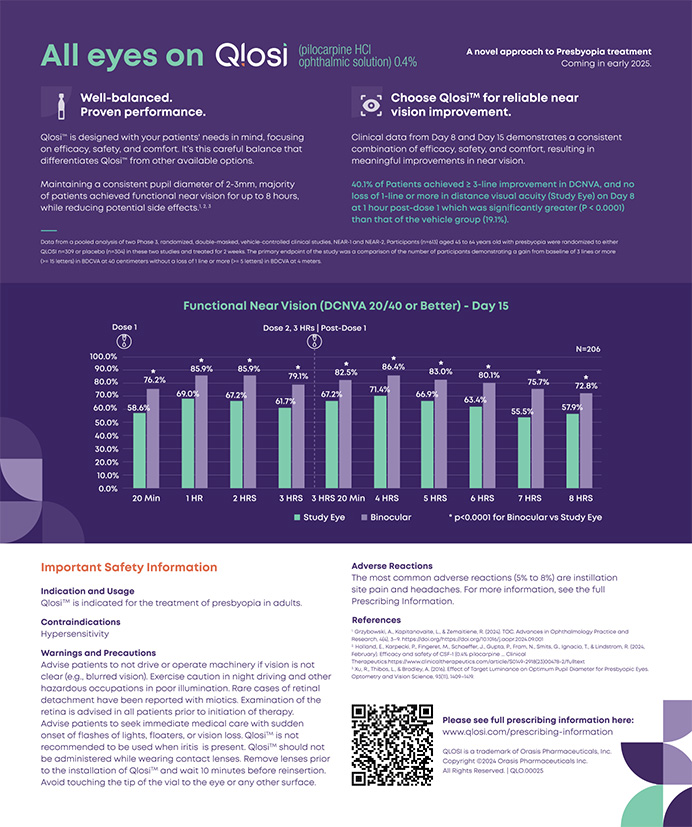Dispersive ophthalmic viscosurgical devices (OVDs) coat intraocular tissues and provide a high level of endothelial protection during phacoemulsification (Figure 1). The dispersive qualities of a short-chained sodium hyaluronate agent cease to be an asset at the end of a case, however, when it is time to remove the material. Unlike longer-chained cohesive OVDs, dispersive agents are difficult to aspirate. At the end of a case, the surgeon frequently confronts a layer of shortchained OVD—often containing particles of nuclear chips, fragments of epinucleus, and bubbles—that coats the cornea and extends to the angle (Figure 2). An additional challenge is that the dispersive material usually lies directly against the endothelium, where it is tricky to aspirate, and in the angle, where it is difficult to visualize. Moreover, small lenticular fragments often hide in the angle, where they are trapped by the OVD.
Failure to remove this retained dispersive OVD and lenticular material can lead to a host of postoperative problems, including elevated IOP with pain and inflammation, especially in eyes with reduced aqueous outflow facility. Postoperative pressure spikes usually require medical treatment and “burping” of anterior chamber fluid to reduce the patient's discomfort and IOP. If ignored or unappreciated, nuclear chips and fragments retained in the anterior chamber cause postoperative inflammation and possibly corneal decompensation. What is the solution? In my experience, the answer is using a cohesive OVD to reposition the residual dispersive OVD.
REMOVAL TECHNIQUE
A cohesive OVD typically used at the end of the case to fill the capsular bag for the IOL's implantation can also be used prior to I/A to viscodissect the dispersive OVD away from the cornea and the angle. Directing the flow of the cohesive OVD anteriorly and peripherally will push the dispersive agent toward the center of the anterior chamber (Figure 3A). The dispersive material can then be safely and more easily aspirated, as it is drawn into the aspiration port by the outward flow of the overlying cohesive material (Figure 3B). In the author's experience, this maneuver has proven to be simple, highly effective, and easily reproducible.
D. Michael Colvard, MD, is a clinical professor of ophthalmology at Doheny Eye Institute, Keck School of Medicine, University of Southern California, Los Angeles, and director of the Colvard-Kandavel Eye Center in Encino, California. He serves as a consultant to Abbott Medical Optics Inc. and Bausch + Lomb. Dr. Colvard may be reached at mike@mcolvard.com.


